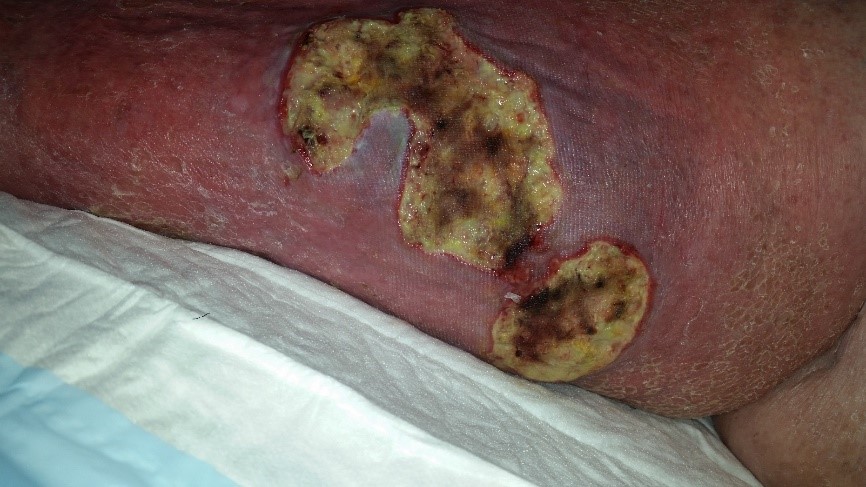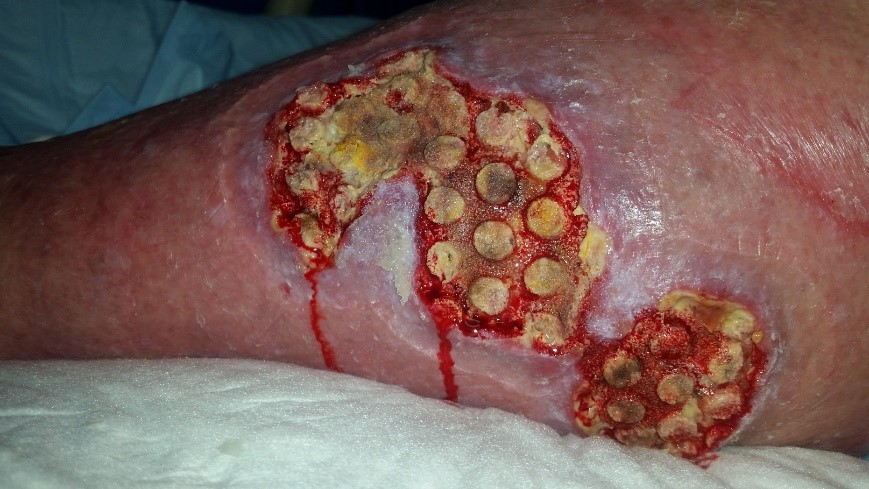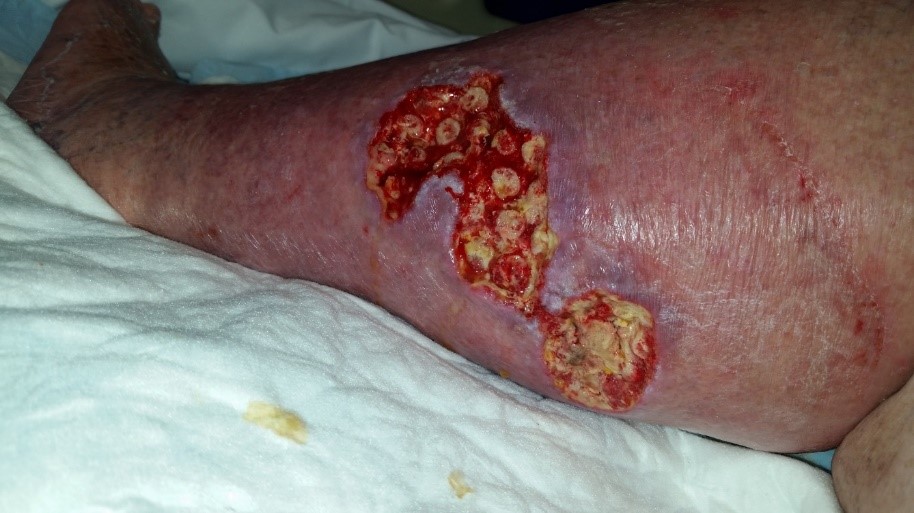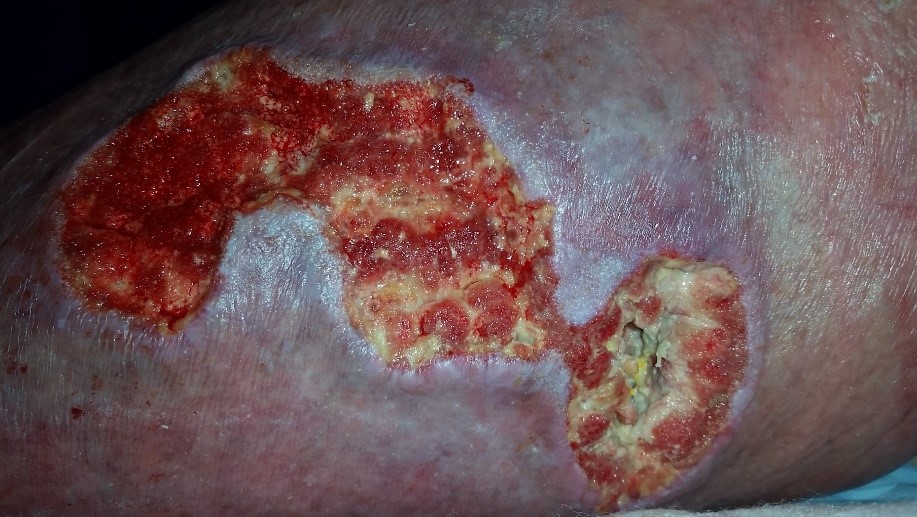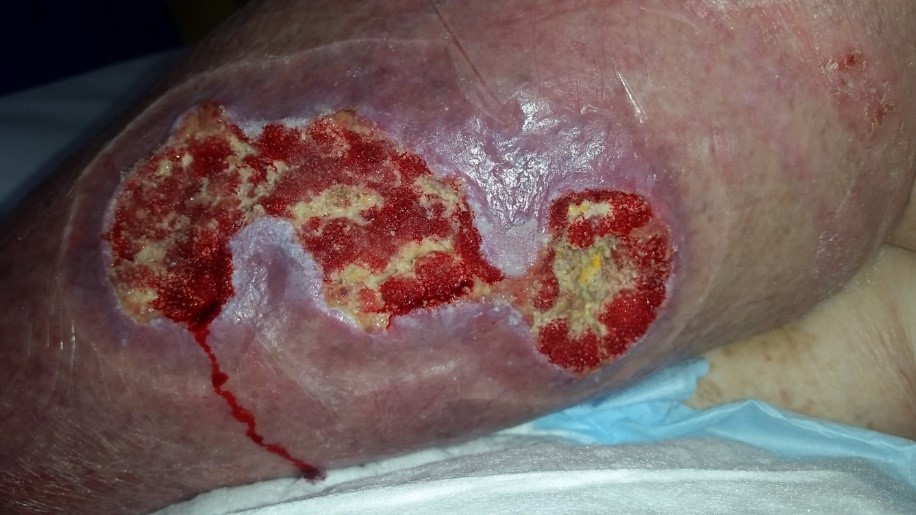Case Study
Introduction:
The utilization of Negative Pressure Wound Therapy with instillation and dwell (NPWTi-d) has been available since 2013 and has shown to improve patient outcomes when compared to standard negative pressure wound therapy.1 The introduction of a new reticulated open cell foam with through holes (ROCF-CC) has expanded the use of this therapy to wounds that have substantial areas of devitalized tissue and slough.
The case study shows the use of NPWTi-d with ROCF-CC to manage a leg wounds with 100% devitalized tissue.
Patient History:
A 76yo female patient presented to hospital with lower limb cellulitis, she was treated with IV antibiotics which resulted in a gradual improvement of the cellulitis. The patient had an ulcer on her left posterior calf which was treated with Intrasite gel, Atraumann and Zetuvit for 8 days. On review by the wound team, the wound was covered with 100% devitalized tissue (Figure 1). A wound swab reported both gram negative rods and mixed flora which were believed to be surface colonisers.
NPWTi-d with ROCF-CC was initiated to clean the wound bed, assist in the removal of devitalized tissue and improve granulation tissue formation.
Treatment Regime:
NPWTi-d with ROCF-CC was initiated on the posterior calf ulcer. Normal saline was instilled into the wound every 12 hours with a soak phase of 10 minutes. At the first dressing change, there was a distinct difference in the wound bed (Figure1) with areas of clean granulation tissue seen. At each subsequent dressing change, the devitalized tissue was reduced and new healthy granulation tissue was seen in the wound bed (Figures 3 to 6)
At 14 days of therapy (Figure 7) the amount of devitalized tissue in the wound was reduced to less than 20% and the patient was stepped down to an V.A.C.® therapy and discharged home.
Conclusion:
The utilization of NPWTi-d with ROCF significantly reduced the amount of devitalized tissue within the wound bed while increasing the amount of new robust granulation tissue. Pain and swelling was significantly reduced and the patient was able to be discharged home with a more manageable wound.
Reference:
- Kim PJ et al. The Impact of Negative-Pressure Wound Therapy with Instillation Compared with Standard Negative-Pressure Wound Therapy: A Retrospective, Historical, Cohort, Controlled Study . Plastic and Reconstructive Surgery, Mar 2014; Vol 133, No.3 (709-716).
